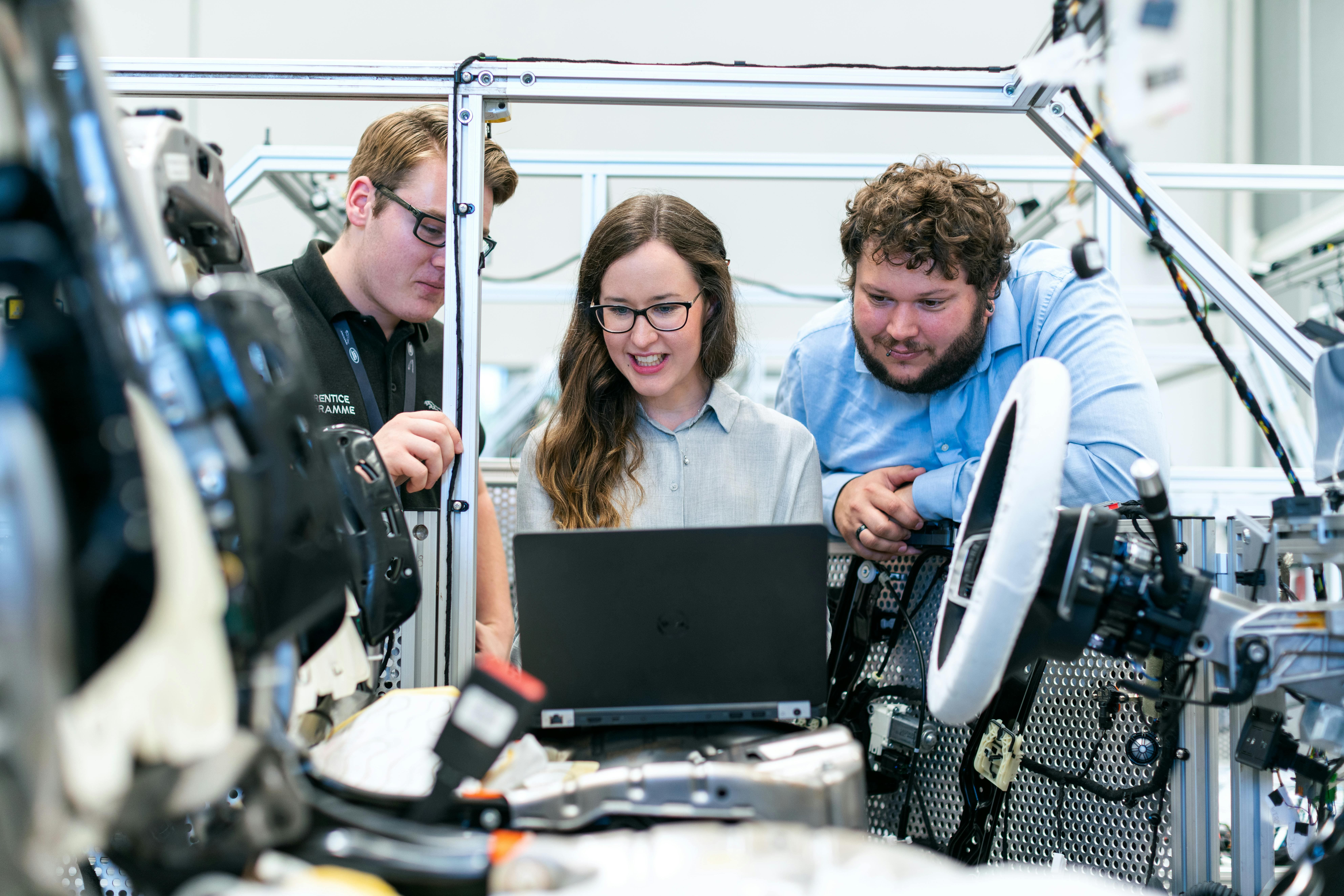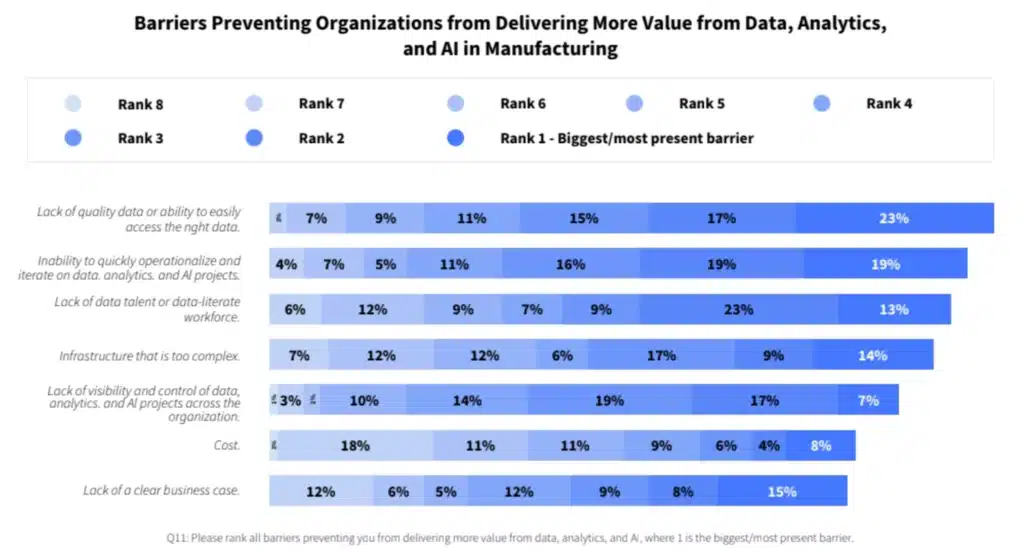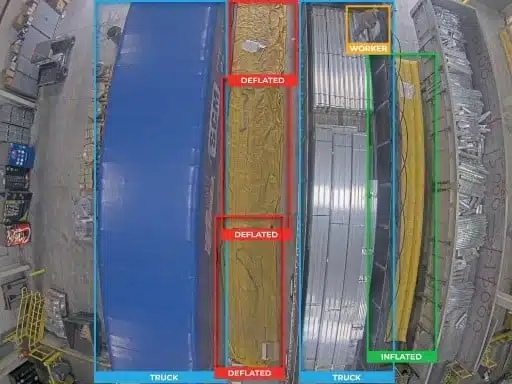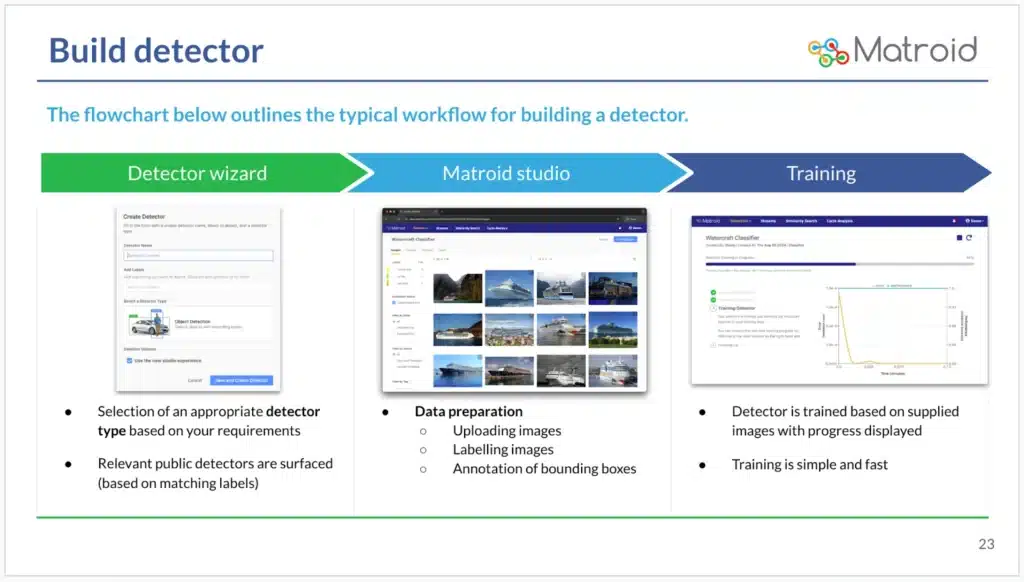Empowering Organizations with Computer Vision

Ryan Wong | July 24th, 2025

Matroid gives machines and organizations the power to see. Our no-code computer vision platform enables anyone to build, test, and deploy visual AI systems in minutes. From defect detection in manufacturing to safety checks in logistics, we help organizations integrate a new sensory layer into their workflows.
Think of computer vision not as a tool, but as a sense, like sight. And just as your eyes are only useful because they’re connected to your brain and body, computer vision only creates value when it becomes part of an organization’s nervous system. This post explores how Matroid makes that possible, not through performative or flashy demos, but through the connective tissue of training, support, and design.
The implementation gap
Computer vision (CV) is a sub-field of AI that gives computers an understanding of the visual world around them. CV has advanced rapidly in recent years. Techniques such as real-time object detection, anomaly detection, and segmentation – once limited to academic research – are increasingly applicable to industrial and enterprise settings. Fields like manufacturing, logistics, infrastructure monitoring, agriculture, and defense are integrating CV into operational workflows.
Despite this progress, a substantial gap remains between state-of-the-art research and practical deployment. While tools and models have matured significantly, many organizations face persistent challenges in implementing CV in production environments, such as a lack of in-house expertise, insufficient infrastructure, and high deployment costs.

What’s missing isn’t capability, it’s connectivity. Many companies install cameras and run detections, but there’s no feedback loop or system-level awareness. Like an isolated sensory input with nowhere to go, the vision never reaches the brain. Matroid closes this gap by integrating vision into the body of the organization.
Matroid makes CV simple and accessible
Matroid is the world’s first no-code computer vision platform that makes computer vision simple and accessible. Built from the ground-up with non-developers in mind, the platform allows you to build, test, and deploy computer vision models (“detectors”) across any environment.
However, software alone is rarely sufficient to ensure successful deployment. Many computer vision projects require domain knowledge, data curation, iterative detector development, and integration with existing systems. To address these needs, Matroid pairs its platform with implementation support under a multi-pronged approach:
- Dedicated Matroid team
- Matroid-managed applications
- Product training
- Product documentation
Think of this like a sensory transplant: you’re not just giving the company new eyes, you’re wiring those eyes into nerves, pathways, and reflex arcs. Every project includes people and processes to make sure that the signal doesn’t get dropped.
Dedicated Matroid team
When partnering with Matroid, each organization is paired with a dedicated Matroid team that educates and guides them through the entire deployment process. This includes an account executive, who acts as the primary point of contact, and deep learning field engineers. Team members have advanced degrees in AI, research and software engineering, whilst also bringing extensive practical experience in deploying CV across a variety of manufacturing and industrial environments.
Support includes regular meetings to review project status, address detector development and integration challenges, and provide guidance on using the platform effectively. The team remains unchanged for the full duration of the engagement, ensuring consistent support and accountability.
You’re not just handed a user manual. You’re handed a support system, or rather, a nervous system. One that grows with you. Your Matroid team acts like an extension of your organization’s neural network, routing insight and guidance to the right operational muscle.
Matroid-managed applications
The development of the first computer vision application is led and managed by the dedicated Matroid team, who are responsible for end-to-end technical delivery.
The process begins with translating the application into a well-defined computer vision problem. This includes determining what needs to be detected and how that translates to NG (not good) or OK (acceptable), testing image formation, scoping hardware, and performing installation in the production environment.
Following hardware deployment, the team coordinates data collection and annotation, which forms the foundation for training Matroid detectors. The training process is iterative, involving continuous evaluation and refinement to optimize detector accuracy and performance. Once the detector meets performance criteria, it is integrated with existing systems and workflows to action and/or elevate detections.
Throughout the project, the organization actively collaborates with the Matroid engineering team. This hands-on exposure provides practical insight into each stage – from problem formulation and data preparation to detector training, deployment, and maintenance. Organizations achieve ROI early whilst also learning first-hand the full CV deployment lifecycle.
Future applications are built, deployed, scaled, and maintained by organizations themselves, under the technical guidance of the Matroid team.

The result isn’t just a successful pilot, it’s a functional reflex. You detect, you decide, and you act. That’s what computer vision becomes when it’s fully wired into an organization: a sense that can trigger action in real time. Not just insight, but instinct.
Product training
Matroid provides live, instructor-led product training to help organizations gain the knowledge required to independently build, test, and deploy computer vision systems using the platform.
Each training session is tailored to the organization’s context and focuses on a relevant application – either the target use case or a closely related one. This use-case-driven approach serves as an anchor for the session, allowing participants to learn platform features and workflows in the context of a concrete, domain-specific problem. The goal is to ensure that organizations gain both practical familiarity with the platform and a clear path to addressing their own computer vision challenges.
Training contents cater to different users, including non-technical, technical, and system administrators. Topics typically include:
- Introduction to computer vision and the Matroid platform.
- Building, testing, and deploying detectors.
- Troubleshooting detector performance and optimization techniques.
- Use of advanced platform features for more complex applications.
- Overview and usage of the Matroid developer API.
- Overview of Matroid’s on-premises system architecture (if on-prem).
- System installation procedures and maintenance workflows (if on-prem).
- Troubleshooting installation and infrastructure-related issues.
By the end of the training, teams are equipped to independently develop and maintain computer vision detectors, enabling them to move forward with their applications with little to no Matroid team guidance.

This is where the real transformation happens. What starts as “fancy automation” becomes something far more fundamental, like adding a new sense that is fully integrated. Once your team understands how to build and train detectors themselves, they stop thinking of computer vision as external. It becomes internal. Embodied. Natural.
Product documentation
Matroid provides extensive product and API documentation to support users in developing, deploying, and maintaining computer vision models using its platform. The documentation includes step-by-step instructions, reference guides, and example workflows covering the full lifecycle of a detector – from data ingestion to training to deployment.

Key areas of the documentation include:
- Detector Types: Overview of the different types of detectors to solve various computer vision tasks / use cases. e.g. classification, object detection, segmentation, anomaly detection, tracking.
- Building Detectors: Instructions for creating detectors using the Matroid Studio. Covers data import, labeling, training workflows, and configuration options.
- Testing Detectors: Guidance on evaluating detector performance using test images. Includes running detectors on images, videos, and live streams, as well as interpreting performance metrics and Matroid detector visualization features.
- Deploying Detectors: Steps to deploy trained detectors in various environments, including batch processing of media files, real-time video streams, and API integrations.
- Improving Detectors: Methods for iterating on detector performance, including collecting feedback and retraining.
- Organizations & Permissions: Describes how to manage access control in Matroid, including setting up organizations, assigning roles, and configuring fine-grained permissions (e.g., view/edit access for detectors and datasets).
- Appendix: Glossary of key terms, list of supported file formats, and reference information relevant to working with the Matroid platform.
In biology, a sensory system is only useful if the signals are accurate, repeatable, and interpretable. That’s exactly what great documentation ensures. It’s not just about features. It’s about signal clarity. Our docs are designed to help your teams move from visual inputs to operational intelligence.
Summary
Matroid bridges the gap between cutting-edge computer vision research and real-world deployment by combining a user-friendly, no-code platform with robust implementation support. Through dedicated teams, managed application delivery, tailored training, and comprehensive documentation, Matroid enables organizations to build, test, and deploy CV systems with confidence. This integrated approach delivers early ROI and upskills teams to be self-sufficient in applying computer vision across their own operational workflows.
When computer vision becomes part of your nervous system, you stop reacting slowly to failures; you start anticipating them. You stop seeing isolated defects; you start recognizing patterns. This is more than automation. It’s awareness. It’s intelligence. And it’s only just beginning.
About the author
Ryan Wong is the Director of Operations at Matroid. He oversees the deep learning field engineering team and commercial operations at Matroid.
Building Custom Computer Vision Models with Matroid
Dive into the world of personalized computer vision models with Matroid's comprehensive guide – click to download today